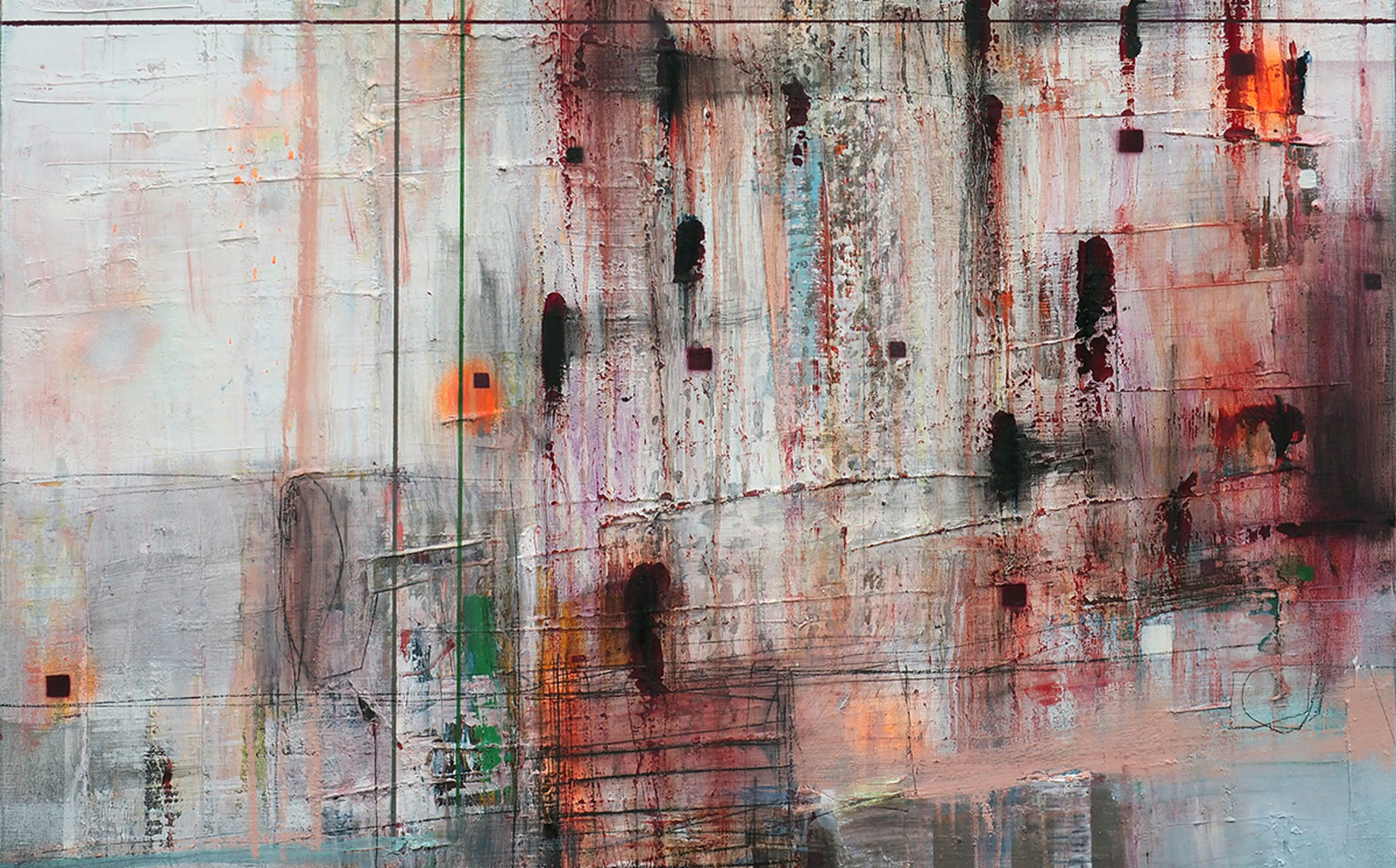
Born 1968
Lives and works in Denmark
Represented by nanda\hobbs

The art of Morten Lassen deals with “that which we cannot see”—the world of transition and transmission. Data: images, words and indeed emojis, beams throughout the world in real time between devices in the cyberspace. It has been the driving theme in his practice for over a decade. Lassen, working as a latter-day Kandinsky, finds pictorial rhythms in the ether. He is an artist who images the unimageable.
Hyper-normalisation is an exhibition that explores cyberspace further than the utopian information paradise that it is often portrayed as. In our data-filled world of social media and newsfeeds, Lassen asks us what happens when this world is hijacked—when we begin to ask; “Am I pretty enough?” “Am I successful enough?” “Do I love my country enough?“.
It is apparent that the infiltration and direction of the data we are exposed to has the power to make a reality TV star—the most powerful man in the world. Subliminal and manipulative messaging is layered—hidden between holiday snaps and social media critiques from the virtual soapbox of people’s fingertips.
With so much information, the depth of our true understanding of anything becomes ever shallow. Two hundred and eighty characters now describes momentous moments in history. Our view of the world is becoming increasingly pixilated and distorted—blurred like a kaleidoscope in motion.
Lassen’s stratification of history, through line and layers of paint, echoes the idea of the past for us. What has been before will affect the layers above. The juxtaposition of pixilation over the more organic world of his picture plane, points to the deconstruction of the real landscape. His work is broodingly influenced by his Nordic sensibility and the location of his studio next to Kornberg Castle on the windswept coast near Copenhagen.
The Russian American anthropologist, Alevei Yurhak, first coined the phrase “hyper-nomalisation” to describe society in USSR in the years before its demise. It was a time when the institutional elite maintained that all was perfect—there was nothing wrong in their country. It was an edict that was based on lies. All knew that it was not perfect and that it would eventually fall over, but went along with the ruse. To admit the system would fail was too terrible to contemplate. Now, the world is faced with a similar conundrum at the other end of the political spectrum.
Lassen’s powerful messaging is present throughout the exhibition. Yet, he reminds us of the physical world—the light and the dark—with all its beauty and potential for hope.
Film by Brianna Roberts.
Your monthly art news on the run plus invitations to Nanda\Hobbs exhibitions and events